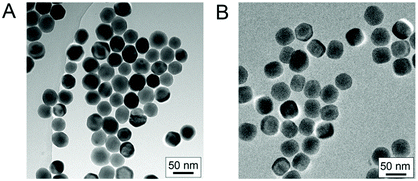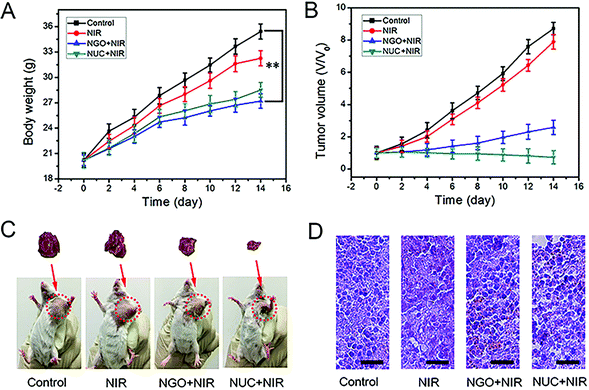 Open Access Article
Open Access ArticleCreative Commons Attribution 3.0 Unported Licence
Correction: Nano-graphene oxide-UCNP-Ce6 covalently constructed nanocomposites for NIR-mediated bioimaging and PTT/PDT combinatorial therapy
Arif
Gulzar
*,
Jiating
Xu
,
Dan
Yang
,
Liangge
Xu
,
Fei
He
,
Shili
Gai
and
Piaoping
Yang
*
Key Laboratory of Superlight Materials and Surface Technology, Ministry of Education, College of Material Sciences and Chemical Engineering, Harbin Engineering University, Harbin, 150001, China. E-mail: arifgulzar@hrbeu.edu.cn; yangpiaoping@hrbeu.edu.cn
First published on 23rd June 2020
Abstract
Correction for ‘Nano-graphene oxide-UCNP-Ce6 covalently constructed nanocomposites for NIR-mediated bioimaging and PTT/PDT combinatorial therapy’ by Arif Gulzar et al., Dalton Trans., 2018, 47, 3931–3939.
It has come to our attention that the average diameter of the UCNPs (Fig. 1A) was incorrectly calculated. This mistake does not influence any of the experimental results and discussion or the conclusions reported in the paper. The sentence on page 3932 “The average diameter of the UCNPs is about 48.2 nm, determined using the TEM image in Fig. 1A” should be corrected as “The average diameter of the UCNPs is about 43 nm, determined using the TEM image in Fig. 1A”. We sincerely apologize for any inconvenience these errors may cause.
The TEM image in Fig. 1A and the fourth H&E stained image of tumor tissues in Fig. 8D were incorrectly displayed. These mistakes do not influence any of the experimental results and discussion or conclusions reported in the paper. The correct figures are provided herein. We sincerely apologize for any inconvenience these errors may cause.
The Experimental section gave wrong information about the preparation of UCNPs. This mistake does not influence any of the experimental results and discussion as well as conclusions reported in the paper. However, we would like to provide the correct description of the synthesis of oleic acid-stabilized β-NaGdF4:Yb3+/Er3+ and core–shell nanoparticles. We sincerely apologize for any inconvenience these errors may cause.
Synthesis of oleic acid-stabilized β-NaGdF 4 :Yb 3+ /Er 3+
Oleic acid-capped β-NaGdF4:Yb3+/Er3+ was synthesized according to the previously developed method.50 In a typical procedure of preparing β-NaGdF4:Yb3+/Er3+, 1 mmol of RE(oleate)3 (RE = 80% Gd + 18% Yb + 2% Er), 5 mmol of NaF, and 15 mL of oleic acid (OA) and 15 mL of 1-octadecene (ODE) mixed solvent were added to the reaction vessel and heated to 110 °C under vacuum for 30 min to remove residual water and oxygen. After that, the temperature was increased to 300 °C and maintained for 1 h in a N2 atmosphere. The core nanoparticles were obtained by successive washing with ethanol and were finally stored in cyclohexane for further experiments.
Synthesis of OA-stabilized core–shell nanoparticles
The above-prepared core nanoparticles in cyclohexane were mixed with 15 mL of OA and 15 mL of ODE in a three-neck reaction vessel with 0.3 mmol of Gd(CF3COO)3, 0.15 mmol of Nd(CF3COO)3, 0.05 mmol of Yb(CF3COO)3 and 1 mmol of CF3COONa. Then, the system was heated to 120 °C under vacuum with magnetic stirring for 1 h to remove residual oxygen and was flushed with N2. The system was heated to 310 °C for 1 h and cooled down to room temperature. Finally, the core–shell nanoparticles (noted as UCNPs in this work) were obtained.
The Royal Society of Chemistry apologises for these errors and any consequent inconvenience to authors and readers.
| This journal is © The Royal Society of Chemistry 2020 |


